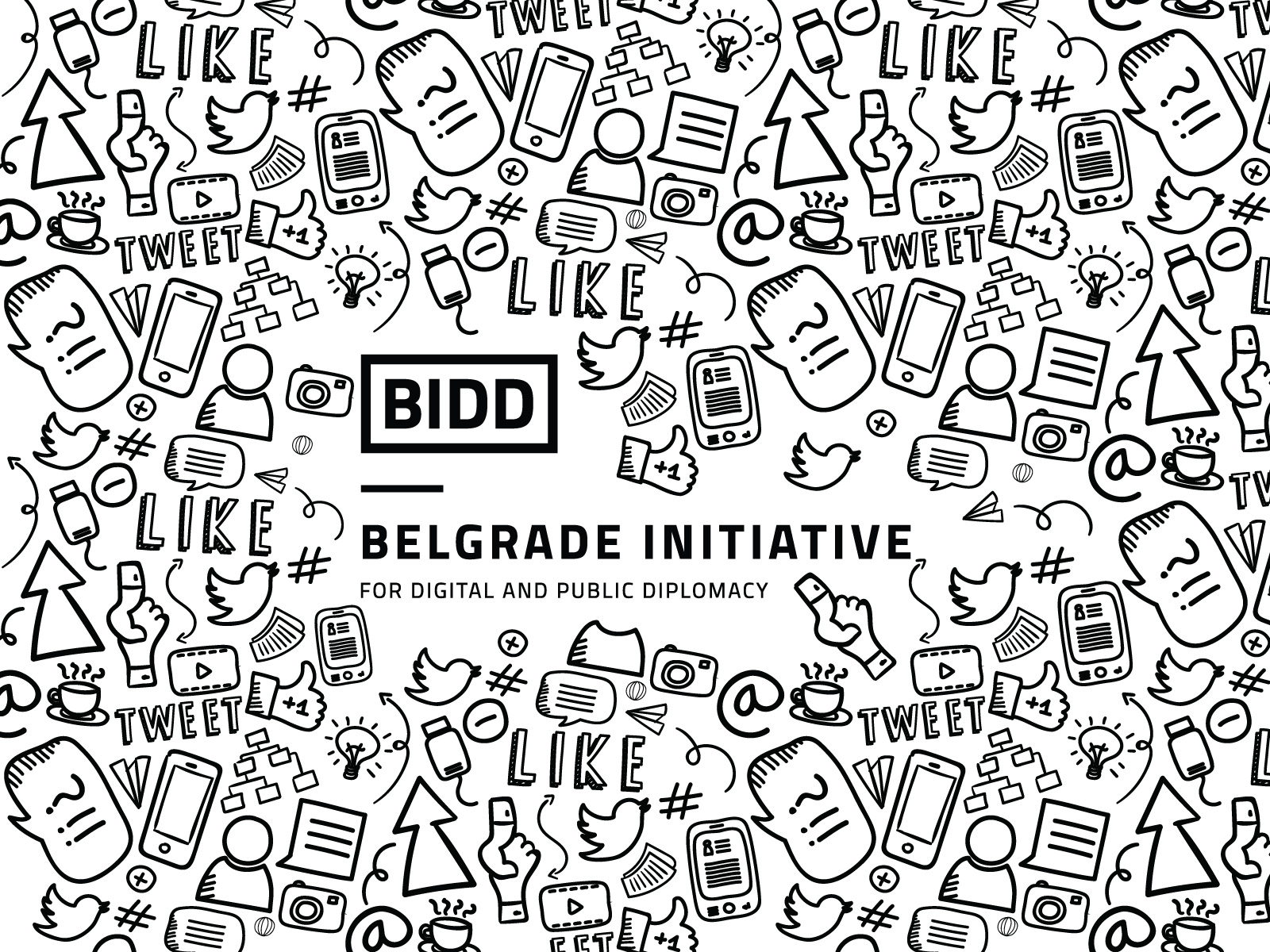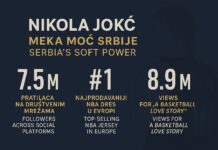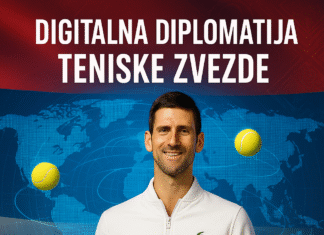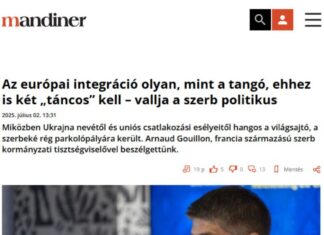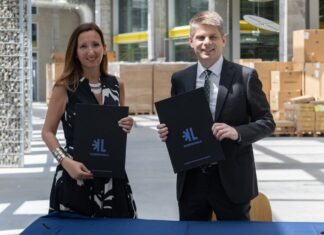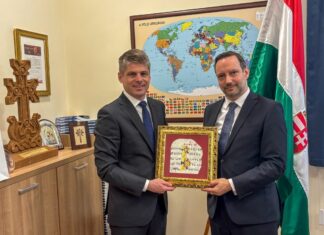
Under the gaze of the Ayatollah, members of the delegation of higher education meet at Shiraz University — Photo by Anthony Bailey
In early June 2015, a mere five weeks before the historic deal concerning Iran’s nuclear program, another significant event occurred. For the first time since the 1979 Iranian Revolution, a delegation of senior U.S. higher education representatives traveled to three cities in Iran (Tehran, Shiraz, and Isfahan) to meet with counterparts from universities and research institutes, in the hope of expanding academic cooperation between the two countries. A year and a half after this initiative, at a time when the new Trump administration has openly warned Iran of unspecified reprisals if it fails to rein in its “aggressive” posturing in the region, it seems appropriate to examine what one might learn from this very explicit non-governmental foray into public diplomacy in the summer of 2015.
The delegation, comprising leaders from the Institute of International Education (IIE), and deans and provosts from American public, private, R1 universities, and liberal arts colleges met with representatives of 13 Iranian higher education institutions in an initiative publicly sponsored by the Iran Ministry of Science, Research, and Technology. The origins of this delegation came from a speech given by current Iranian President Hassan Rouhani at a Council on Foreign Relations event in New York in 2013. In light of the lack of any formal diplomatic relations between the United States and Iran, the notion of educators establishing an informal mechanism that might constitute a guiding principle for a subsequent diplomatic agreement was welcomed by both the Rouhani administration and institutions of higher education in both countries.
If notions of diplomacy assume a process of negotiations in a public sphere, one would be hard-pressed to describe the delegation’s visit as one of intense bargaining to establish educational agreement. The “negotiations” did not constitute contested notions of whether there was any value in reinforcing Iranian-American ties, but rather focused on more logistical issues of how best to increase mobility between students and scholars from each country. One could not help thinking that the delegation’s interactions with all these preeminent scholars and college educators served merely to preach to the converted. A vast majority of the attendees had completed their Ph.D.s in the United States or Western Europe and welcomed any moves to reinforce educational ties. Indeed, all participants echoed the Iranian government’s promotion of internationalization of higher education to include strengthened bilateral relations with American universities and colleges. The delegation, resultantly, found itself not battling ideological wars, but figuring out ways to develop institutional ties based upon common research and teaching agendas–a fitting role for a group of educators and a considerably more prosaic one than tackling the historical and political gulfs that had existed between the two nations since the overthrow of the Shah in 1979.
The delegation and its counterparts in Iran shared an apprehension that the proposed Iran nuclear deal was deeply vulnerable. Both groups concurred that its successful adoption might herald a genuine renaissance in intellectual and academic ties. Discussions were, at times, extraordinarily frank. The extent to which these academics rued the administration of the hardline former president, Mahmoud Ahmadinejad, as an era that stultified intellectual inquiry was startling. Many spoke wistfully of more enlightened times under the late reformist President Akbar Hashemi Rafsanjani, and praised the global vision of the current Rouhani administration. Discussions included little or no reference to the Supreme Leader of Iran.
When the U.S. delegation departed Tehran on June 13, 2015, and with the subsequent ratification of the treaty a month later, one might have forgiven the members for assuming that their visit heralded a new golden age in US-Iranian relations. A white paper, “Reinventing Academic Ties: Opportunities for U.S.-Iran Higher Education Cooperation–A Report on the IIE Iran Higher Education Initiative,” published in July 2015, identified the various ways in which Iranian and U.S. institutions could expand collaboration through short-term research opportunities for Iranian Ph.D. students, joint Ph.D. advising, dual degree programs, short-term visiting faculty appointments, virtual team teaching, and short-term or summer study abroad courses for U.S. students.1
This optimistic evaluation of educational collaboration mirrored a broader increase in global interest in Iranian engagement following the nuclear treaty. Economic sanctions have been gradually lifted and waves of predominantly European politicians have been rushing to Iran to launch new or to expand already existing economic and political ties with a country that has suffered from decades of economic embargo and political isolation. And yet, ironically, these unadulterated and seemingly self-interested political and economic forays into Iran led to little or no responses from Iranian hardliners.
In reality, no recent delegation to Tehran triggered such strong reactions among the ultra-conservative forces within the Iranian polity as did the visit of the American educators. Upon the departure of the American academics, hardliners launched a massive propaganda campaign against the “irresponsible” officials in President Hassan Rouhani’s cabinet for their “soft and friendly attitude” toward the Americans, and warned them about the “subversive American cultural infiltration” into the Islamic Republic through “educational/cultural diplomacy.” An article published in the Persian-language website of the BBC in March 2016 noted that “after experiencing a disastrous defeat in the recent elections, some hard-liners in Iran…attacked the Rouhani government and claimed that a group of U.S. academics toured Iran the previous summer to organize what they called an ‘infiltration project.’”2 A Reuter’s article reported that Mashregh, a Persian-language online news service allied with the Islamic Revolutionary Guard Corps, cast the delegation’s visit as a way for Washington to create a network of students to spy for the United States after returning to Iran.3
While members of the delegation found such allegations patently absurd, the vitriolic condemnation of their visit clearly underscored a poorly veiled attack on Iranian institutions of higher education as representing a deeply threatening segment of a society open to change and reform. Connecting these institutions very explicitly with their American counterparts had a deliberate intent. These forms of smear campaigns against the opposition in general and more systematically against the reformist currents and factions within the regime are as old as the Islamic Republic itself. Since its founding in April 1979, the dominant conservative faction of the Islamic Republic has been using anti-Americanism as a powerful instrument against many of their contenders in the country to consolidate and maintain its power.
Since the British-American-engineered coup d’état in August 1953 and the removal of the democratically elected government of Premier Mohammad Mosaddeq, anti-Imperialism/anti-Americanism has remained at the forefront of all political struggles for democracy and independence in the country. Serving as a major and effective strategy during the revolutionary mobilization against the Shah’s regime, the anti-Imperialist crusade reemerged at the center of post-revolutionary politics in the country, and has been playing a critical role in the power struggle between the ideological hardliners and the pragmatic factions within the Iranian state. One must note that two of the earliest targets of the new Islamist revolutionary power elites led by Ayatollah Khomeini were the U.S. Embassy in Tehran and the country’s institutions of higher education. Khomeini loyalists launched a nationwide Islamic Cultural Revolution to Islamicize and “purify the Western-plagued” culture and, most notably, the institutions of higher education throughout Iran. As the stronghold of leftist and liberal ideas, Iranian universities turned into and remained major sites of struggle for power and influence. To the present day, the Supreme Leader of the Islamic Revolution rarely misses any public opportunity to warn about the cultural infiltration of the West, in particular an American one that seeks to destabilize the Islamic Republic through the introduction of Western-style educational tenets into universities throughout the country. By contrast, the more pragmatic faction calls for modernization, economic and political opening, and a normalization of relations between Iran and the United States. Put simply, the anti-West/anti-U.S. rhetoric is organically tied to the domestic power struggle between factions within the Iranian political elites. Consequently, from the perspective of the dominant conservative elements, any possible normalization of relations with the United States, especially with U.S. universities, would compromise their authority and empower the reformist currents. Furthermore, since the regime utilizes anti-American propaganda to define itself against its domestic contenders, an opening of relations with the United States to any degree would disarm them ideologically and compromise the state’s legitimacy to the point of an irreparable legitimacy crisis. The above analysis should help us understand the reasons behind the harsh attack against the U.S. academics’ visit to Tehran and illustrate the complexities of the domestic power struggle over the control of institutions of higher education in Iran. Any attempt to establish long-term academic relationships with the United States, in the language of powerful hardliners and Khamenei loyalists, is read as an alias for a gradual regime change.
Endnotes
1 Obst, Daniel and Clare Banks, ed. Reinventing Academic Ties: Opportunities for U.S.-Iran Higher Education Cooperation – A Report on the IIE Iran Higher Education Initiative. New York, NY: Institute of International Education. Jul. 2015. Web.
2 “What is the Story Behind ‘The Infiltration of the CIA Operative in Iran’ that Mohsen Rezaee is Talking About?” BBC Persian. 01 Mar. 2016. Web.
3 Arshad, Mohammed and Parisa Hafezi. “U.S.-Iran Education Exchange Plans Cools Over Hardliners’ Spy Charges.” Reuters. 05 Jul. 2016. Web.
 Michael Ballagh is associate vice president for International Programs at Pitzer College, Claremont, CA. He completed his BA at Trinity College Dublin, Ireland, and his Ph.D. at the Claremont Graduate School. For three years, he worked with the UNDP in Hanoi, Vietnam. An educator with over 25 years in the field of international education, he has focused on developing both diverse study abroad opportunities for students, while focusing on ways to enhance the diversity of participating students. He has extensive background in the assessment of learning outcomes on study abroad programs.
Michael Ballagh is associate vice president for International Programs at Pitzer College, Claremont, CA. He completed his BA at Trinity College Dublin, Ireland, and his Ph.D. at the Claremont Graduate School. For three years, he worked with the UNDP in Hanoi, Vietnam. An educator with over 25 years in the field of international education, he has focused on developing both diverse study abroad opportunities for students, while focusing on ways to enhance the diversity of participating students. He has extensive background in the assessment of learning outcomes on study abroad programs.
 Hamid Rezai studies social movements in the Middle East with a particular focus on Iran. Additional research and teaching interests include Iranian Studies, political violence, democratization, and comparative politics of the Middle East and the Muslim world. He is completing his manuscript “Authoritarian States, Contentious Societies: Politics, People, and Protest in Contemporary Iran,” which examines the impact of demographic alteration, elite factionalism, and dissident discourse on emerging popular protests, their trajectories, and their likely outcomes. Hamid has a BA and MA in politics from Ludwig-Maximilians-Universität in Munich, Germany, and a Ph.D. in Middle Eastern Studies from Columbia University. He teaches politics at Pitzer College.
Hamid Rezai studies social movements in the Middle East with a particular focus on Iran. Additional research and teaching interests include Iranian Studies, political violence, democratization, and comparative politics of the Middle East and the Muslim world. He is completing his manuscript “Authoritarian States, Contentious Societies: Politics, People, and Protest in Contemporary Iran,” which examines the impact of demographic alteration, elite factionalism, and dissident discourse on emerging popular protests, their trajectories, and their likely outcomes. Hamid has a BA and MA in politics from Ludwig-Maximilians-Universität in Munich, Germany, and a Ph.D. in Middle Eastern Studies from Columbia University. He teaches politics at Pitzer College.


